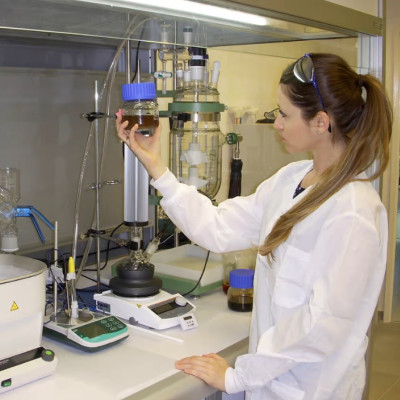
2023-03-08
Visited : 1231
Physicists found that speeding electrons trapped in circular loops in graphene quantum dots are highly sensitive to external magnetic fields
Trapped electrons traveling in circular loops at extreme speeds inside graphene quantum dots are highly sensitive to external magnetic fields and could be used as novel magnetic field sensors with unique capabilities, according to a new study.
Electrons in graphene (an atomically thin form of carbon) behave as if they were massless, like photons, which are massless particles of light. Although graphene electrons do not move at the speed of light, they exhibit the same energy-momentum relationship as photons and can be described as “ultra-relativistic.” When these electrons are confined in a quantum dot, they travel at high velocity in circular loops around the edge of the dot.
“These current loops create magnetic moments that are very sensitive to external magnetic fields,” explained Jairo Velasco Jr., associate professor of physics at UC Santa Cruz. “The sensitivity of these current loops stems from the fact that graphene electrons are ultra-relativistic and travel at high velocity.”
Velasco is a corresponding author of a paper on the new findings, published March 6 in Nature Nanotechnology. His group at UC Santa Cruz used a scanning tunneling microscope (STM) to create the quantum dots in graphene and study their properties. His collaborators on the project include scientists at the University of Manchester, U.K., and the National Institute for Materials Science in Japan.
“This was highly collaborative work,” Velasco said. “We did the measurements in my lab at UCSC, and then we worked very closely with theoretical physicists at the University of Manchester to understand and interpret our data.”
The unique optical and electrical properties of quantum dots—which are often made of semiconductor nanocrystals—are due to electrons being confined within a nanoscale structure such that their behavior is governed by quantum mechanics. Because the resulting electronic structure is like that of atoms, quantum dots are often called “artificial atoms.” Velasco’s approach creates quantum dots in different forms of graphene using an electrostatic “corral” to confine graphene’s speeding electrons.
“Part of what makes this interesting is the fundamental physics of this system and the opportunity to study atomic physics in the ultra-relativistic regime,” he said. “At the same time, there are interesting potential applications for this as a new type of quantum sensor that can detect magnetic fields at the nano scale with high spatial resolution.”
Additional applications are also possible, according to co-first author Zhehao Ge, a UCSC graduate student in physics. “The findings in our work also indicate that graphene quantum dots can potentially host a giant persistent current (a perpetual electric current without the need of an external power source) in a small magnetic field,” Ge said. “Such current can potentially be used for quantum simulation and quantum computation.”
The study looked at quantum dots in both monolayer graphene and twisted bilayer graphene. The graphene rests on an insulating layer of hexagonal boron nitride, and a voltage applied with the STM tip creates charges in the boron nitride that serve to electrostatically confine electrons in the graphene.
Although Velasco’s lab uses STM to create and study graphene quantum dots, a simpler system using metal electrodes in a cross-bar array could be used in a magnetic sensor device. Because graphene is highly flexible, the sensor could be integrated with flexible substrates to enable magnetic field sensing of curved objects.
“You could have many quantum dots in an array, and this could be used to measure magnetic fields in living organisms, or to understand how the magnetic field is distributed in a material or a device,” Velasco said.
Read the original article on University of California.